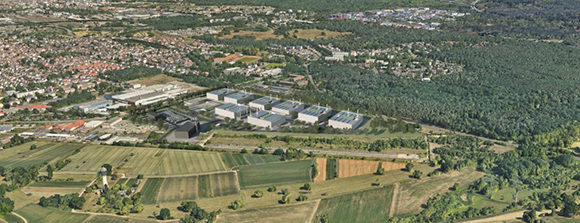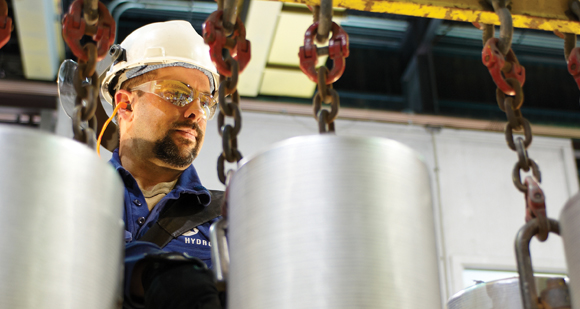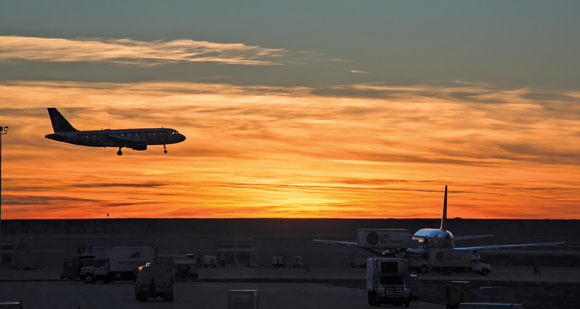|


|
FROM SITE SELECTION
MAGAZINE, MARCH 2023 ISSUE
|

|
GLOBAL NEWS DIGEST
Quick-hitting news briefs fill us in on Europe’s smartest cities; the
EU’s thoughts on global competition; a $6 billion ethylene plant in
Qatar; Magna’s Romanian engineers; Roadway innovation in the
Netherlands; a Saudi Arabian battery materials plant; and SK
bioscience’s new HQ and R&D center in Songdo.
|
|
 
|

|
Among the hyperscale colocation projects on the docket is a $1 billion-plus,
500-job data center campus on the site of a former U.S. Army barracks in
Hanau, Hessen, Germany, from French firm DATA4, which Brookfield announced
yesterday it had agreed to acquire.
Image courtesy of DATA4 and Invest in Hessen
|
|
Among the eyebrow-raising findings in the 2023 Global Data Center Outlook being released
today by JLL: At the end of 2021, global data center energy consumption
reached 190.8 terawatt hours – 2.2 times more than in 2020. Data centers
now collectively account for approximately 2% of total U.S. electricity
use. JLL sees a direct correlation to the work-from-anywhere economy.
“After the pandemic removed the four walls of the workplace, our new
world of hybrid work has created an unprecedented need for digital
technology,” said Andy Cvengros, managing director, JLL. “Employees are
looking to their companies to create a seamless experience wherever they
choose to work, requiring intelligent technology solutions to bridge the
gap between the physical and the digital.” That means “impressive” data
center growth, says JLL, which notes the global colocation data center
market size is forecasted to grow by 11.3% from 2021 to 2026 and the
hyperscale market by 20%.
“The U.S. is seeing strong appetite compared to other regions and
accounts for 52% of all data center transactions from 2018 to 2022,” the
new report states. “Additionally, the U.S. had 1,633 megawatts (MW) of
absorption in 2022 for the six U.S. primary markets – Chicago,
Dallas-Fort Worth, New Jersey, Northern California, Northern Virginia
and Phoenix. These markets also have 1,939 MW under construction.” As
for hyperscale, “with 314 new hyperscale sites globally in development
today, that number is expected to surpass 1,000 by the end of 2024 — up
from around 500 sites just five years ago,” JLL says, citing Uptime
Institute’s finding that 53% of that hyperscale capacity is in the U.S.
Since January 2020 Site Selection’s Conway Projects Database has
qualified 513 data center projects that involved at least $1 million
invested, 20 new jobs or 20,000 new sq. ft. of space. Watch for our
analysis of new hyperscale location trends in the July issue of Site Selection.
|
|
|
KENTUCKY — WHERE
TRADITION MEETS INNOVATION
|

|
METALS MANUFACTURING
The Bluegrass State is a magnet for investment in the metals sector.
|
|
|
SITE SELECTION
RECOMMENDS
|

|
Five years ago, Site Selection documented how Williams
Sausage’s $44 million in Obion County, Tennessee, benefited from the
NMTC program.
Photo courtesy of Williams Sausage
|
|
Congressional representatives from across the political
spectrum last week introduced the New Markets Tax Credit
(NMTC) Extension Act of 2023. It calls for the program to be
extended permanently, and for $5 billion in annual credit
authority to be devoted to the highly successful program
that has revitalized neighborhoods across the country. “This
House bill joins its Senate companion (S. 234) to provide
bipartisan and bicameral support for a 20-year-old program
with a clear track record of creating jobs and bringing
much-needed economic development to underserved areas,” said
Aisha Benson, president of the NMTC Coalition and resident
and CEO of Nonprofit Finance Fund. “We believe the NMTC is
an effective program deserving of a permanent home in our
tax code.”
Since its inception in 2000 as the Community Renewal Tax
Relief Act, says the Coalition, the NMTC has generated more
than 1 million jobs and $120 billion in investment. It
backed 277 projects and helped create more than 52,000 jobs
in 2021 alone. Check out the NMTC
Coalition’s websit and project database for examples of how
thousands of projects and companies in every corner of the
nation have been supported by the NMTC.
|
|
|
|
COLORADO – BUSINESS
COMES TO LIFE 2023
|

|
PROXIMITY TO MARKETS
You can have the best of both worlds in Colorado.
|
|
India
HÜBNER Group last week inaugurated a new complex in Malonagathihalli,
Nelamangala Taluk in the Bengaluru metro area that was launched as a
project in 2020. The company produces folding bellows and gangway
systems for rail vehicles. Nearly 80% of the 8,200-sq.-m.
(88,267-sq.-ft.) facility will be devoted to production. “At the old
location [in Dabaspete], there were only 3,000 square meters to handle
all of the company’s processes, and this space was distributed among
three locations, which were several kilometers apart from each other,”
the German company explained. Current major projects being handled by
the company include supplying systems for metros in metropolitan
Bengaluru, Mumbai and Sydney, Australia. “The new ‘Namma Factory’ [“our
factory”] makes it possible for HÜBNER to operate more effictively, more
flexibly and with shorter delivery routes in India’s growing market,”
says Kai Mentel, managing director of the HÜBNER Group. “With local
production at the new location, we are not only meeting localization
requirements and reliably serving the needs of our customers, we are
also strengthening the entire global production network of the HÜBNER
Group.”
Tennessee
Not every battery is headed for an EV. We still need the old-fashioned
alkaline variety too. Last week Duracell announced this $25 million,
25-job investment in its battery component manufacturing operation in
Cleveland, Tennessee. It will support the company’s site in LaGrange,
Georgia. The Cleveland plant on Mouse Creek Road opened in 1961 and has
shipped C-sized and D-sized batteries for decades. “With this
investment, the site adds a new important role of supporting our greater
North American supply chain,” said Stefaan Boterberg, president,
Duracell Manufacturing, LLC. “We agree that Duracell is ‘Engineered for
More,’ and we believe it,” said Cleveland Mayor Kevin Brooks. “From the
‘Power Forward’ relief program to supporting local organizations,
Duracell makes Cleveland a true copper-top community.”
|
|

|

|
Photo courtesy of U.S. Bureau of
Reclamation
|
|
The U.S. Bureau of Reclamation’s California-Great Basin team hosted a
construction and geology workshop last month near B.F. Sisk Dam and San
Luis Reservoir where this striking image was made. The region, one of
five Reclamation regions across the nation’s 17 western states,
encompasses two-thirds of California, the Klamath Basin and most of
Nevada. A major seismic upgrade now underway — Reclamation’s largest dam
safety project under the 1978 Safety of Dams Act — received a $100
million investment earlier this year from the Bipartisan Infrastructure
Law. Watch for more coverage of water supply in the May issue of Site Selection.
|
| |

